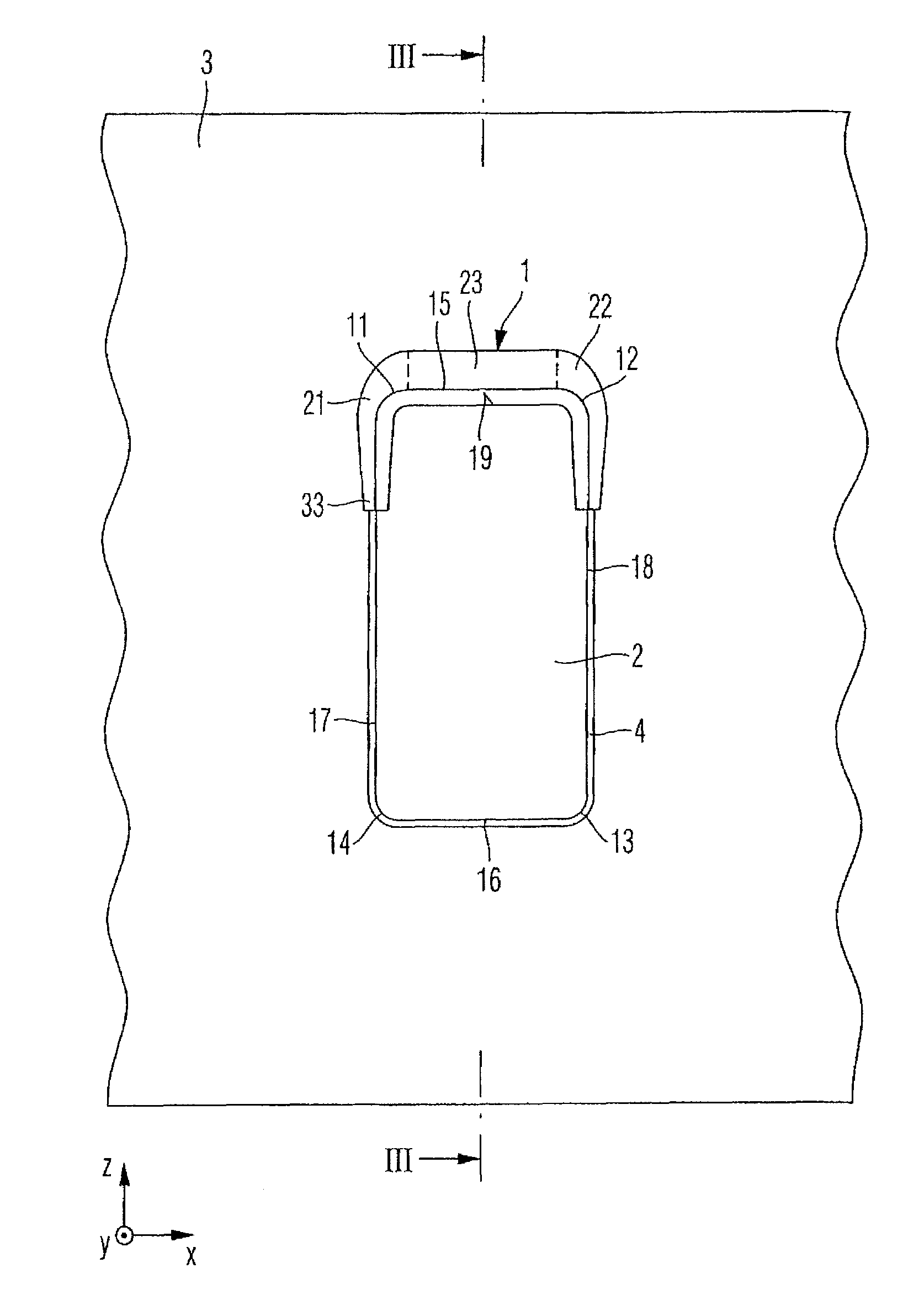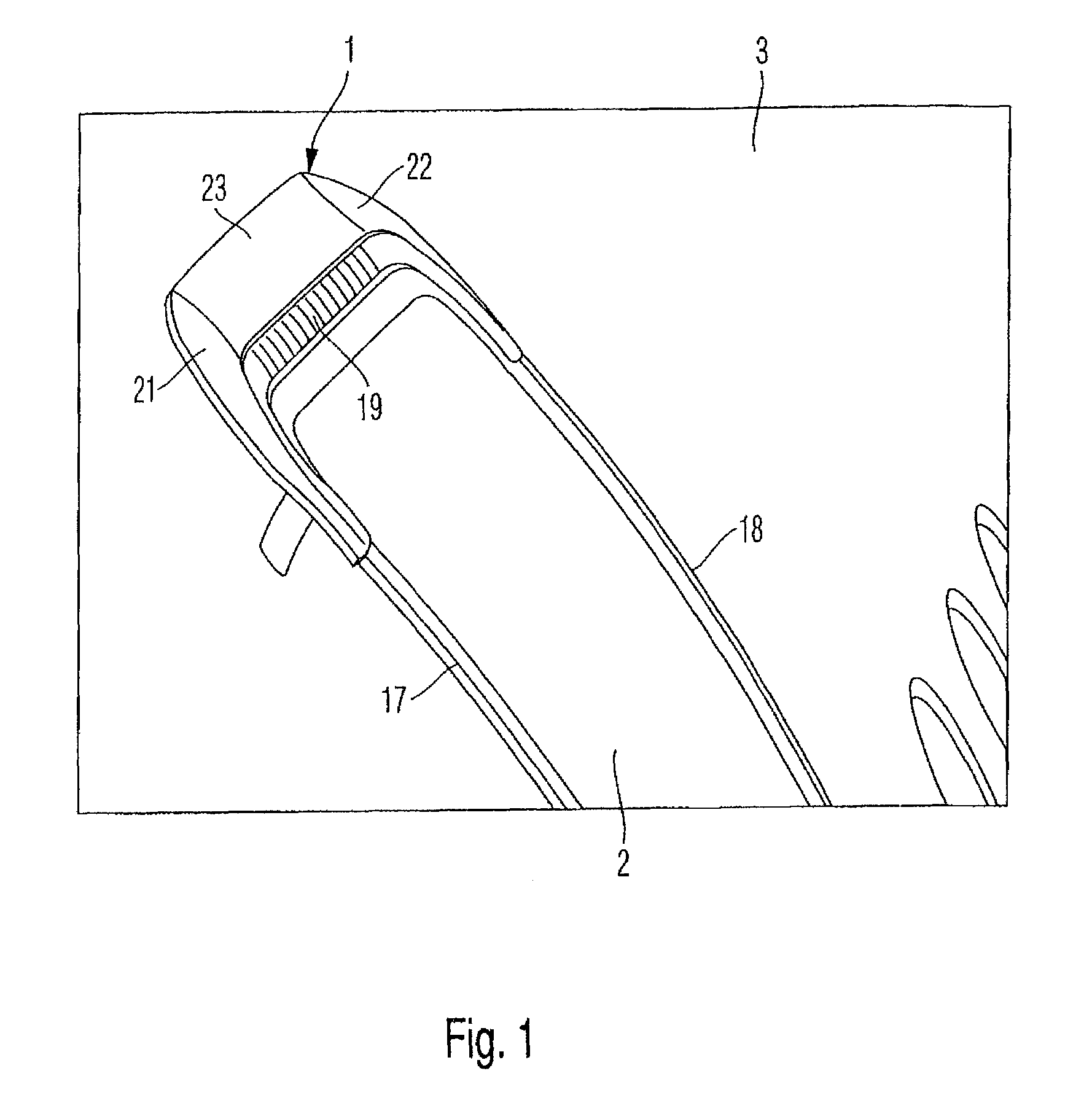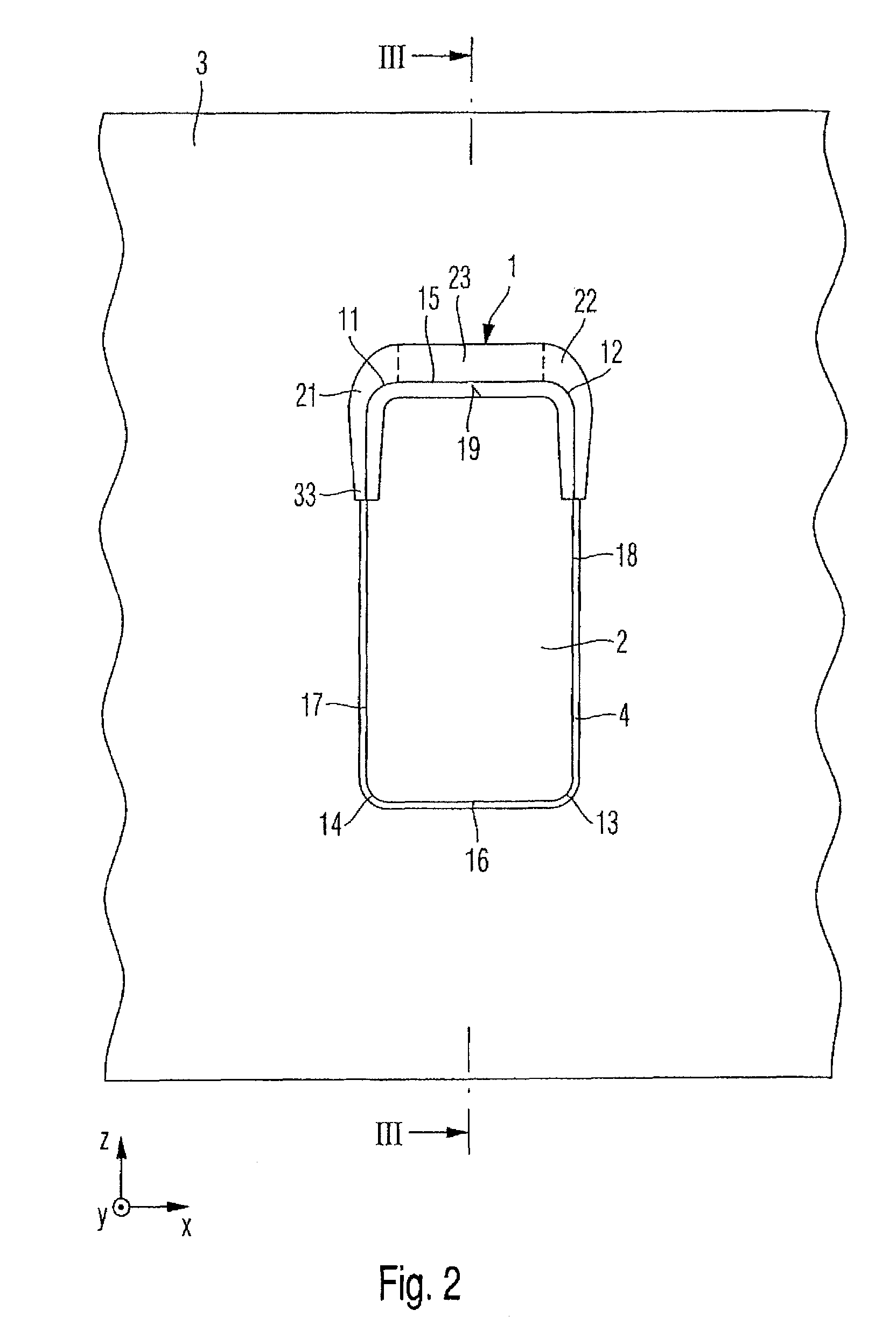Cover plate, door covering and aircraft or spacecraft
a technology for applied in the field of cover plates, door coverings and aircraft or spacecraft, can solve the problems of cover plate vibration, noise, and insufficient contact between the cover plate and the fuselage cell, and achieve the effects of preventing vibration, constant contact pressure, and reliably preventing the core corrosion
- Summary
- Abstract
- Description
- Claims
- Application Information
AI Technical Summary
Benefits of technology
Problems solved by technology
Method used
Image
Examples
Embodiment Construction
[0023]FIGS. 1 to 4, to which reference will be made simultaneously, illustrate a preferred embodiment of a cover plate 1 for covering a door gap 4 formed between a door covering 2 and a fuselage cell 3 of an aircraft or spacecraft. The cover plate 1 is preferably configured as a so-called cover plate 1.
[0024]The fuselage cell 3 preferably has an access opening 5 which can be closed by the door covering 2. The door covering 2 is also known as the door leaf 2. Passengers or any loads, for example, can pass into the fuselage cell 3 through the open access opening 5. The door covering 2 is preferably mounted on the fuselage cell 3 such that it can swivel thereon by a hinge means. The door gap 4 is formed between the door covering 2 and the access opening 5. The door gap 4 can run round the entire door covering 2. The door gap 4 is preferably only formed on an outer skin 6 of the fuselage cell 3, in other words the door gap 4 preferably does not form a connection between the exterior 7 a...
PUM
 Login to View More
Login to View More Abstract
Description
Claims
Application Information
 Login to View More
Login to View More - R&D
- Intellectual Property
- Life Sciences
- Materials
- Tech Scout
- Unparalleled Data Quality
- Higher Quality Content
- 60% Fewer Hallucinations
Browse by: Latest US Patents, China's latest patents, Technical Efficacy Thesaurus, Application Domain, Technology Topic, Popular Technical Reports.
© 2025 PatSnap. All rights reserved.Legal|Privacy policy|Modern Slavery Act Transparency Statement|Sitemap|About US| Contact US: help@patsnap.com



